Tilsit cheese
The East Prussian city of Tilsit (now Sovetsk) has gone down in history not only because in 1807 the emperors Napoleon Bonaparte and Alexander I signed a peace treaty here. And not only because Tilsit was once the easternmost city in Germany to have a tram . Nowadays, having breakfast on a hotel terrace overlooking Lake Constance, it is possible that you will find a piece of Tilsit, or more precisely, Tilsiter, on your plate. Don't believe me? Then see for yourself.
Cheese factories in East Prussia appeared during the time of the Teutonic Order. After the Great Plague of 1709-1710, Mennonite settlers from Holland brought their cheese-making traditions to East Prussia, and to the Memel region in particular. "Mennonite cheese" was sold in large quantities and was popular. Settlers from Salzburg and Switzerland also contributed to the creation of cheese-making traditions in East Prussia. These "home recipes" used by farmers in the districts of Ragnit, Tilsit and Elchniderung formed the basis for the future famous Tilsit cheese - Tilsiter.
A few kilometers north of Tilsit, a certain Frau Westphal (née Klunk) from Switzerland (according to other sources, Fraulein Klunk was born not so far from Tilsit, in Schillen) lived on her estate. She loved to experiment with cheese recipes - Ragnit cheese, Brijolön cheese and others that replaced the "Mennonite cheese". One of the results of her experiments was a soft, salty cheese sprinkled with caraway seeds. In 1840, Frau Westphal purchased a plot of land with a "dairy farm" from a certain Mr. Kühr (Joh. Kühr), located in Tilsit at Deutschesstrasse 38, and together with her son Heinrich built a cheese factory in its place, called "Westphal Nachfl., Inh. Otto Braun" (something like "Westphal's heirs, manager Otto Braun"). And five years later, apparently after the death of Frau Westphal, production was again transferred to the opposite bank of the Memel, to the Milchbude farm, where there was an excellent cheese factory. It was there that the Tilsit cheese that would later conquer Europe began to be produced.
After the Franco-Prussian War of 1870-1871, East Prussia, like the rest of Germany, experienced an economic boom. Milk production increased, there was a surplus, and the development of cheese making made it possible to use this surplus. Moreover, rail transport made it possible to very quickly deliver products literally to the most remote corners of the empire.
Oddly enough, specialists for work in the developing industry were brought in from Frau Westphal's homeland - Switzerland. And they worked not only as cheese makers, but also simply milked East Prussian cows. And the Swiss did it well, which earned them the respect of the local bauers.
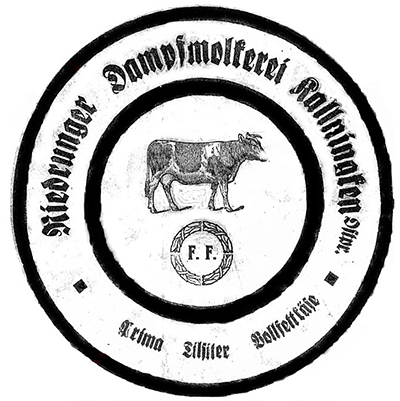
Later, the Union of Dairy Producers was created in Tilsit, which included several enterprises that purchased milk from local farmers. Special requirements were imposed on the quality of the milk. Cheese factories that produced Tilsiter united in their own special union - "Verband Tilsiter Käsefabrikation". In 1926, with the assistance of the Königsberg Agricultural Chamber, the Union for the Promotion of the Dairy Industry was established. In 1928, in the small village of Sausseningken (5 km southwest of Kaukemen ), an educational institution was opened on the basis of a local cheese factory, training specialists in the production of Tilsiter. In 1932, local Tilsiter producers voluntarily introduced quality control over the milk delivered to their enterprises. This made it possible to improve the quality of the cheese produced. Proof of this is the fact that 46 Tilsiter producers became laureates of the Eastern Exhibition in 1938 in Königsberg.
So, the entire process of Tilsiter production began not just anywhere, but in the flooded meadows of Elchniederung and Memelland. Juicy grass and numerous herds of cows, Swiss milkmaids, and here is the result: select milk. Then the cheesemakers got down to business.
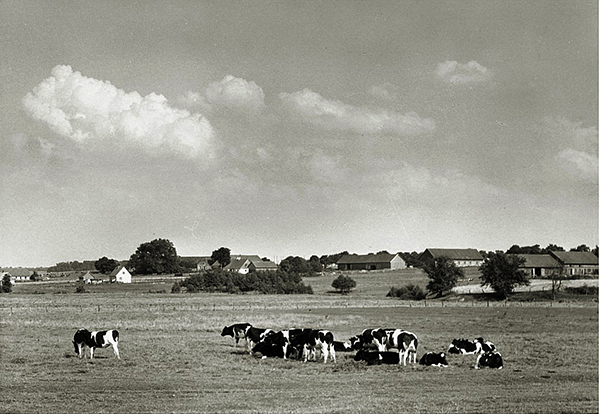
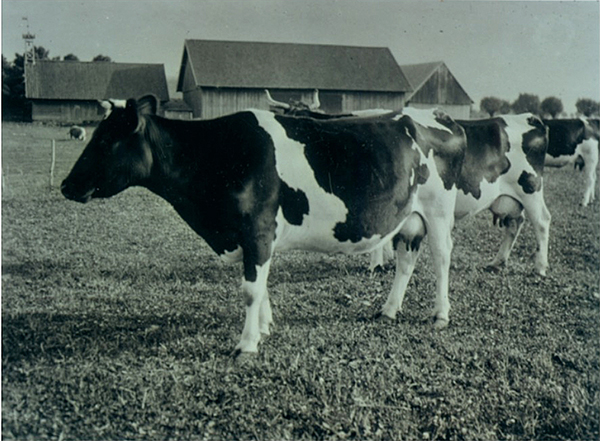
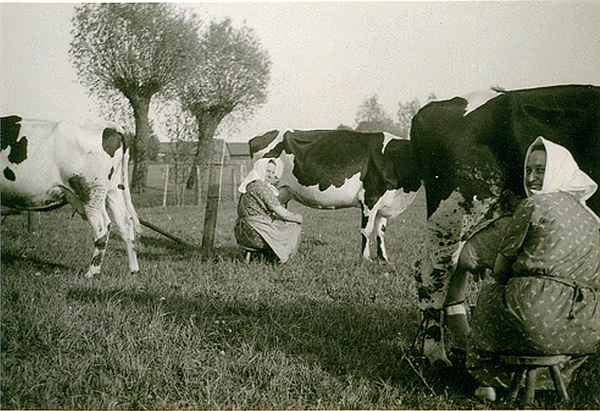
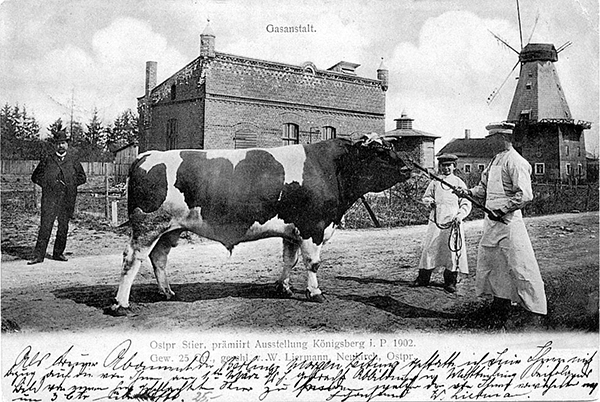
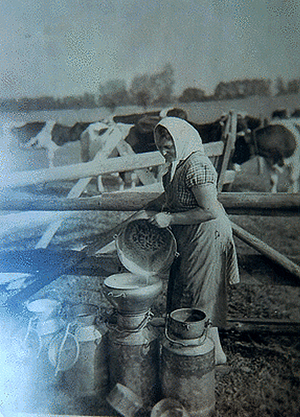

The cheese mass was self-pressed (i.e. without external pressure) to form Tilsiter cheese heads, approximately 10 cm high and 25 cm in diameter. Each head had to weigh 4-5 kg. They were then placed in a bath with a 20% salt solution, in which they were soaked for 2-3 days at a temperature of 12-15°C. The wet Tilsiter cheese heads were coated with a special red compound (Rotschmiere), which, among other things, contained special bacteria that accelerated the fermentation process of the cheese and gave it a special taste. Then, for 5-7 weeks, the cheese matured in humid cellars. After maturing, the red-brown Tilsiter cheese head was wrapped in parchment, and later in tin foil. Wooden boxes with 10 cheese heads in each were sent by sea or by rail to Berlin, Hamburg and other cities in many German lands. From 100 liters of milk, approximately 9 kg of finished cheese was obtained.
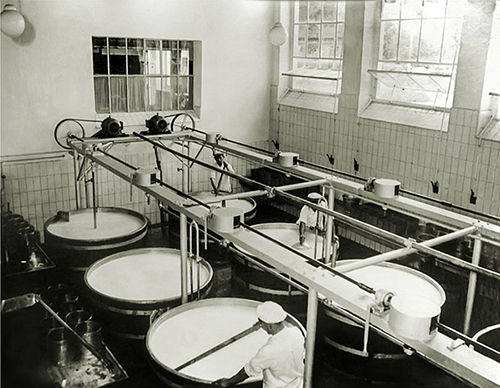
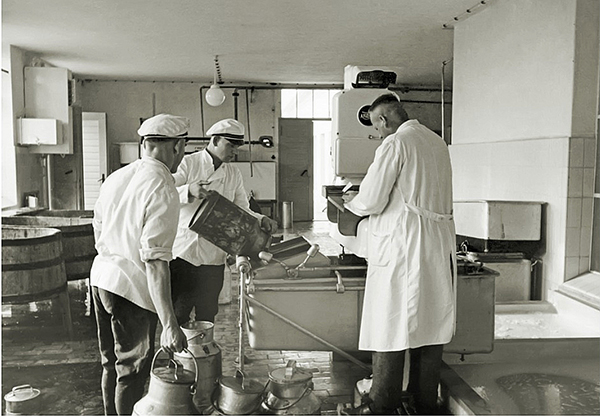
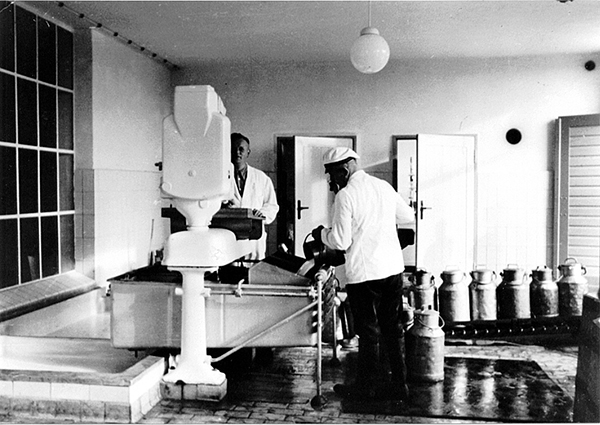
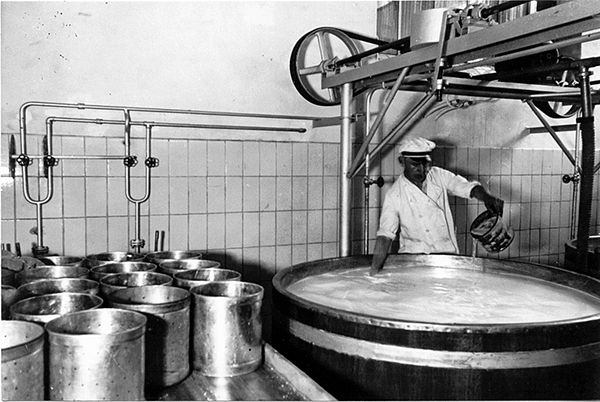
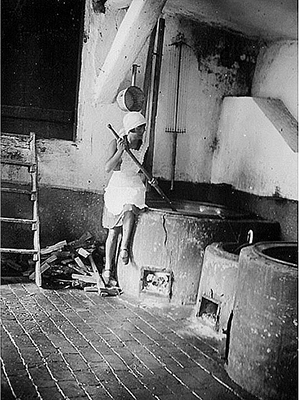

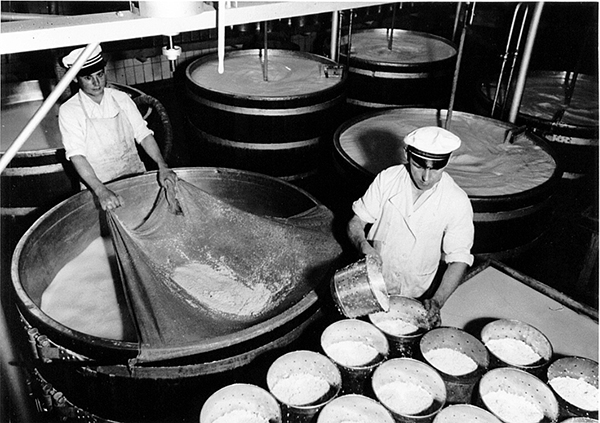
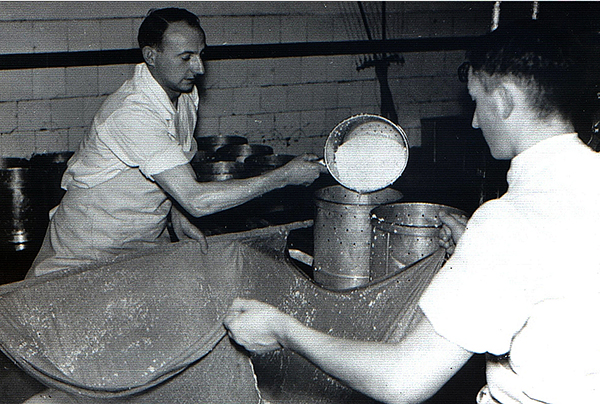
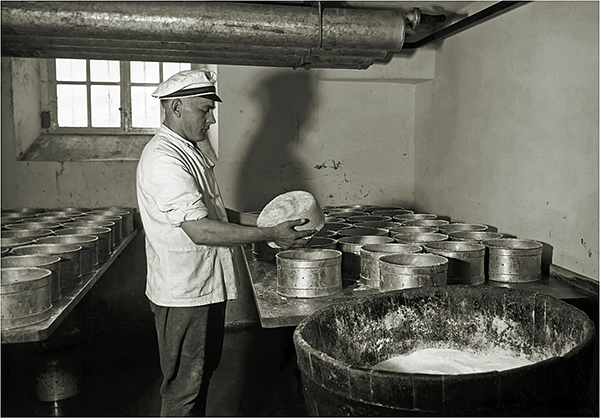
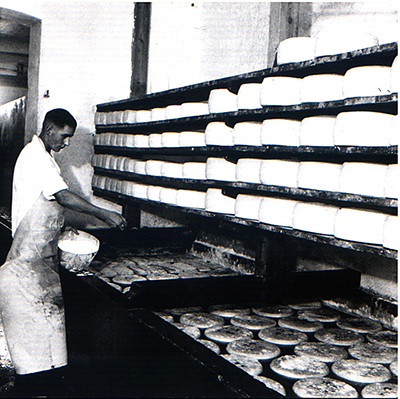
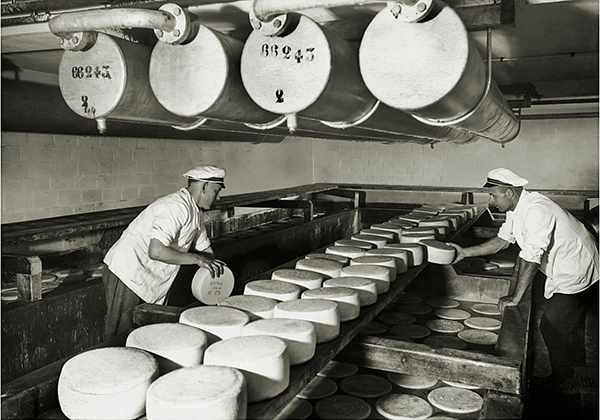
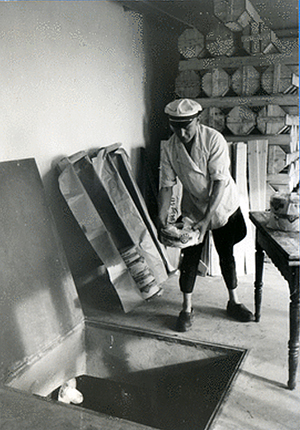
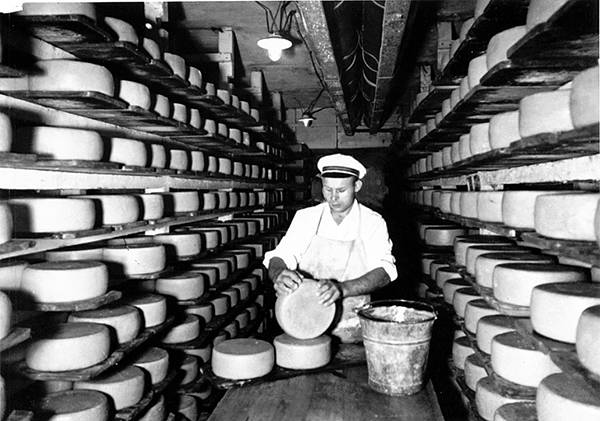
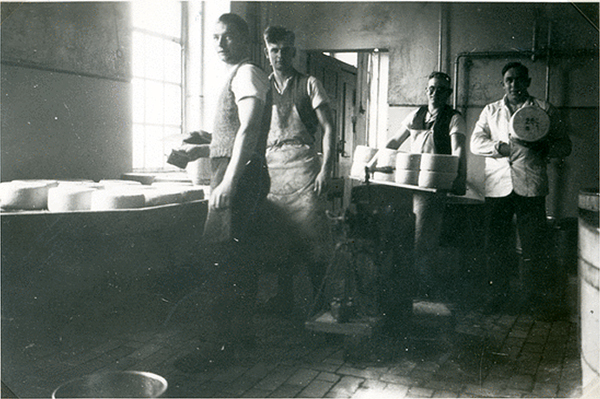
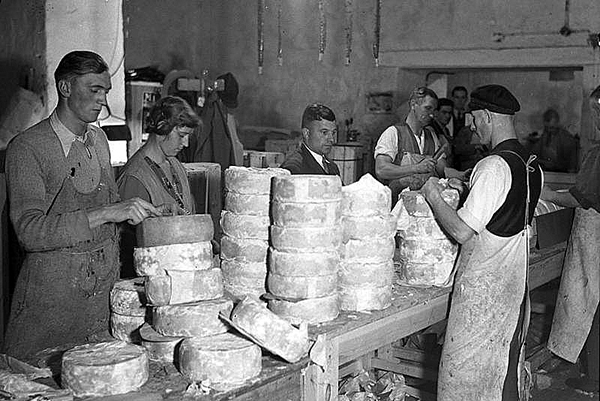
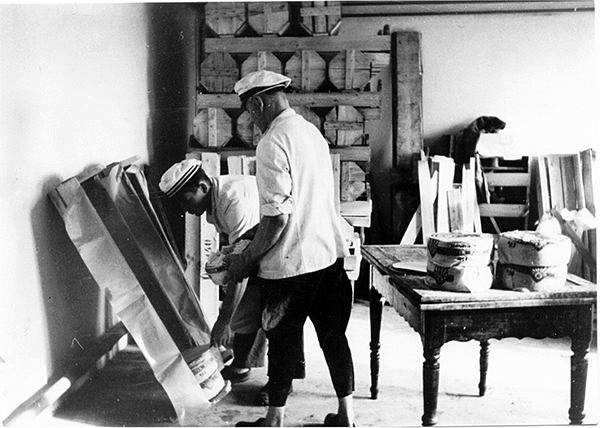
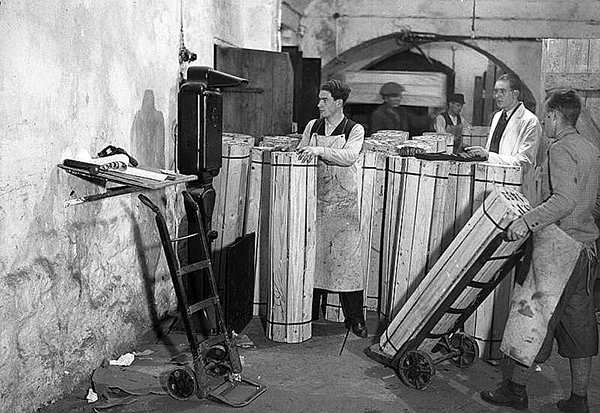
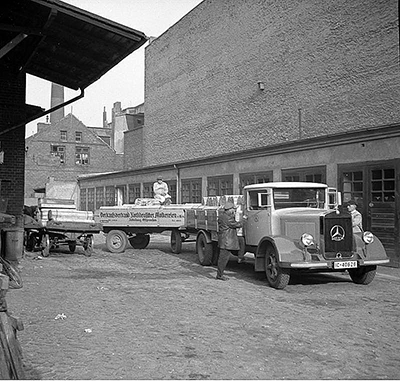
At the end of the 1930s, there were more than 50 factories operating around Tilsit with an annual production volume of more than 4,600 tons of Tilsiter.
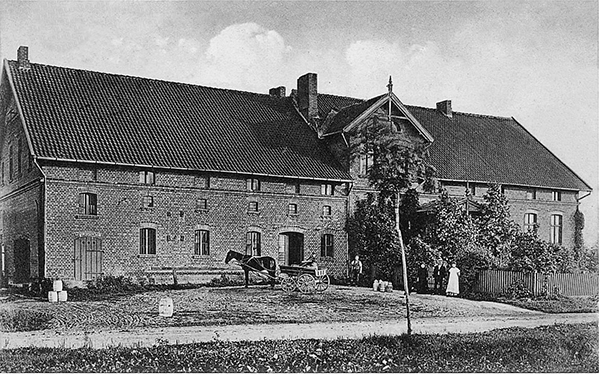
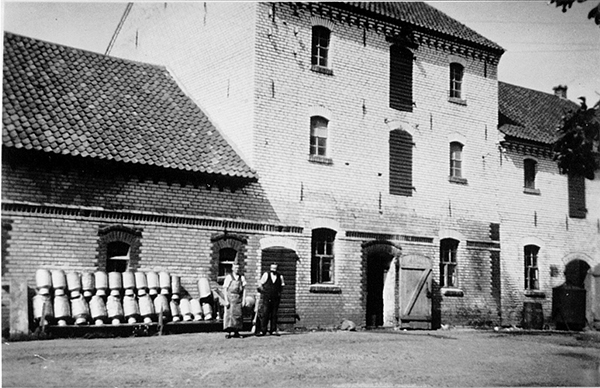
The popularity (and quality assessment) of Tilsiter is evidenced by the fact that the cheese was included in the rations of Wehrmacht soldiers. Here is an excerpt from the memoir "War" by Boris Zuckerman:
“I pass by the corpse of a German, he seems to have been killed recently. A fragment stuck in his chest is sticking out through his torn jacket. A field bag is slung over his shoulder. What a bag! I’ve dreamed of one like this for a long time. Well, it will be my trophy. I take it off, open it, shake out the contents onto the ground: a notebook, a map of the area, a handful of junk and a strange-looking tube like toothpaste, but five times larger and without a head through which the paste is squeezed out. Just a convex shiny surface. The tube is filled with some kind of mass that springs slightly under the fingers, and on the side surface, in green letters with a red border, is the inscription: Tilsiter Bona and a little lower in small print - 150 g. What is this, well poison or some other fascist abomination? No, not poison, of course, that would be powder. Throw it away? But I still wonder what's there?
The convex front surface of the tube comes off unexpectedly easily. Underneath
it is a shiny, yellowish, slightly porous plastic mass with an unexpectedly
pleasant smell. My head snapped, this delicious smell was familiar from
childhood. What is this?! I couldn’t resist, I licked it. And then an arrow
pierced my consciousness: My God, this is processed cheese! I had completely
forgotten about its existence. . . .
Tilsiter Bona turned out to be tasty. Although with caution, I ate it without a
trace."
According to current standards, Tilsit cheese must be made from cow's or buffalo's milk (or a mixture of both), and must be aged at a temperature of 10–16°C for 3 weeks. Tilsit cheese is not a registered trademark and is produced by several European countries. For example, the tradition of producing Tilsiter in Switzerland (and again, the Swiss were involved!) dates back to 1893, when a merchant from the canton of Thurgau, Otto Wartmann, returned from a trip to Tilsit not alone, but with a recipe for Tilsit cheese. Since then, Tilsiter has been so loved in Thurgau that they did not even hesitate to rename the village of Holzhof, where this cheese is produced, to Tilsit on August 1, 2007.
And finally, a couple of old folk tales about Tilsiter.
Milk princess
In ancient times, not far from the mouth of the Memel, in the castle of Ragaine, lived King Memelus. And he had three sons - Rombinus, Wilmantis and Tilzatis. When the sons grew up, their father sent them on a journey so that they could see the world and gain wisdom. The princes were away from home for several years, and when they returned, Memelus built each son a castle on the banks of the Memel.
Rombinus and Vilmantis did not return from their journey empty-handed. The former brought with him from the northern lands an ancient stone given to him by giants, and placed it at the walls of his castle, saying that from then on this stone would be a sanctuary to the god Perkunas.
Wilmantis brought a magic bell from the southern lands, which a dwarf gave him. No matter how much the bell was shaken, it did not make a sound. But it began to ring itself at the slightest sign of danger. In the future, when Wilmantis was already a very old man, the bell rang, warning the owner of the approach of the Teutonic knights to his castle.
Tiszatis brought nothing back from his travels, so his brothers often made fun of him for it. Soon he got married and had a daughter. Like her father, she was also made fun of. Therefore, even as a child, she often went into the forest, where she wandered alone for a long time. She also liked the peasant life, so she often helped the peasants with their field work. Tiszatis was upset that his daughter, unlike other princesses, did not shine at balls, but he resigned himself and, in the end, allowed his daughter to settle in the village. There were no cities or markets in those days. And people lived on what they themselves got from the land and their farms. Those who had many cows had milk. Excess milk often soured. And the princess noticed that if you warmed up sour milk on the fire, it curdled and from it you got cottage cheese of an unusual taste. She spent a long time fiddling with the curdled milk until she finally got a delicious cheese, which was later called Tilsit cheese. For her hard work and diligence, the girl received recognition from people and was awarded the nickname "Milk Princess". And where the castle of Tilsatis once stood, the city of Tilsit later appeared.
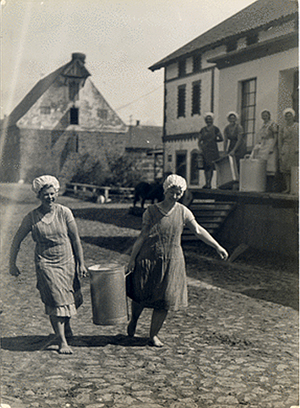

The Tale of Tilsit Cheese
Long before the Knights of the German Order appeared in the lands of East Prussia, a giant and his daughter lived on a hill near Tilsit. Their numerous herds of cows grazed on the endless meadows on both banks of the Memel. The grass in the meadows was juicy and the cows gave tasty and fatty milk, from which excellent cream and butter were made. But there was so much milk that the giant and his daughter did not have time to drink it all. Therefore, over time, the daughter learned to make cheese from it, yellow as gold and soft as butter. And the aromatic spices that she added to the cheese made its taste truly unforgettable. The giantess was not greedy and often treated her neighbors to her magnificent cheese. But she kept the recipe for its preparation a secret. No matter how hard people tried to find out the secret of the cheese, they did not succeed. It is not surprising that they were angry with the giant's daughter for this and enviously called her "milk princess". At first the giantess only laughed at this, but when her patience ran out, she decided to teach the ungrateful people a lesson. She called all her neighbors to her castle. And she put a large head of cheese in front of each of them. The people eagerly pounced on the cheese, but immediately shouts and screams were heard: the cheese was made of stone, and many of the guests broke more than one tooth. The giant girl laughed heartily at the unlucky guests, and then threw them all into the castle moat. At first the people tried to get out of it, but after futile attempts, they begged for mercy and swore that they would never again envy the giant's daughter or call her names. The giantess's heart softened. She forgave the people, helped them get out of the moat and then again treated them to real cheese, and in addition, she also put them a keg of foamy beer . The guests ate the wonderful cheese, drank honey beer, and told the giantess about their difficult peasant work. When all the plates and mugs were empty, the giantess took the guests to her cheese factory and showed them how she made cheese. The resourceful peasants turned out to be quick learners, and soon they, too, began making cheese that was as golden and as spicy as the giant's daughter. From generation to generation, people began to pass on the recipe for Tilsiter, and this cheese became popular throughout the country, and even today it pleases many with its unique taste.

__________________________________________________
Based on materials from:
Hermanowski G. Eastpreussen Lexicon. 1996.
www.ostpreussen.net
www.tilsit-ragnit.de
www.verein-milch-und-kultur.eu
www.tilsit-stadt.de
www.bildarchiv-ostpreussen.de
www.bundesarchiv.de
www.tilsiter.ch
